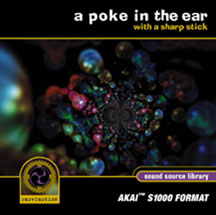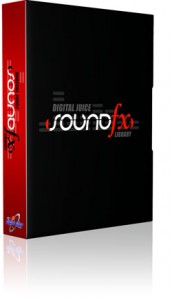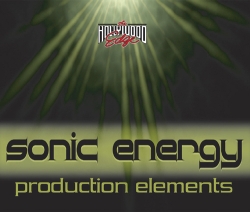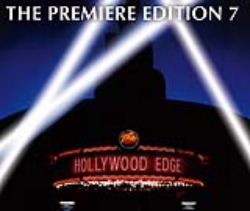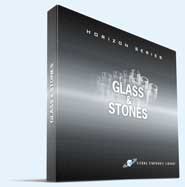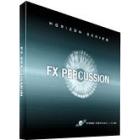Review by Carlos Garza
| Quantum Leap set the bar in 2004 with the original 16-bit Storm Drum product. If you wanted bombastic samples for action films, games or that “Peter Gabriel” drum sound, SD1 was it. Fast forward to 2008 and Stormdrum 2 brings a range of improvements, including 24-bit samples and 100 MIDI rhythm tracks.
This is the first in a series of percussion library reviews. Future reviews will look at ProjectSAM’s True Strike set, also aimed at TV/film and electronic game scoring. We will also look at FlyingHand Percussion, a set that uses the advanced programming features of the Native Instruments Kontakt player for subtle articulation control.  Storm Drum 2 FeaturesOver 12GB of new samples, with the exception of the Metallica “Black” drum kit from Ministry of Rock. The drums were recorded at the new EASTWEST Studio 1 (formally United-Western). Quantum Leap reports that SD2 was recorded using vintage Neumann mics and Meitner A/D converters. Included are toms, cymbals, kits, ethnic metals, small gongs, waterphone, spring drums, brake drums, a metal bridge and whale drum. There are ethnic drums, such as custom congas and bongos, Indonesian bongos, Malaysian djembe, Nepalese two-headed drum, Dholak, timbales, udu. There are rhythmically “glitched” drones, ambient low sounds, “Godzilla Hits,” “psychotic” effects, swooshes, stutters, clicks, clangs and “Rumpfs.” SD2 expands on the ensemble samples that were the hallmark of SD1. Producer, Nick Phoenix explains, “SD1 had a cool patch called ‘Thunder Ensemble’. This was six musicians hitting large drums in unison in a warehouse. SD2 has the ‘Earthquake Ensemble’, which is eleven musicians hitting huge, large and sometimes smaller drums in unison in EASTWEST studio 1.” SD2 uses the proprietary 64-bit Play engine rather than third party plug-in players. The Play interface includes convolution reverb, delay and disk streaming management. Wideness can be minimized for precise sound placement and the 64-bit architecture is compatible with 32-bit operating systems. Play offers a stand-alone functionality and is compatible with VST, ASIO and DirectSound on Windows and VST, Audio Units and Core Audio on Mac OS. Copy protection requires an iLok security key. Recommended configuration includes a DVD drive, Core 2 Duo, 2.5 GHz or faster, 2 to 4GB RAM and XP SP2, Vista or Mac OS 10.4 or later. In UseThe installation was glitch-free on my Mac OS 10.5 desktop. One thing to note is the iLok security key requirement, which makes the set a little less convenient for mobile rigs. SD2 packs a wallop where it counts, big dramatic drums. I’m sure these sounds are going to show up in role-playing shooter games and heart pounding, escape-from-who-knows-what movies. Among the stand-outs are the “Beast” (a custom 42” Remo tom), Nagado, taikos and the Tong Zi drums. There are also lighter sounds like the stick hits on the Chinese Kettle drum, the darbuka, dholak and some acoustic chirps called, “Ticki Ticki,” which would be right at home in a percolating action-adventure groove. The MIDI performances focus on driving rhythms for action scoring with a smattering of neutral and exotic grooves. Each MIDI file comes with an associated multi-patch — up to 16 individual patches. You’ll find well-named beats like, “Malicious Hordes,” “Rampant Carnage,” and “Chasing the Devil” that show off the amazing power of these sounds. The MIDI tracks reveal a strong collection of rock drum sounds, large dramatic drums and a unique collection of effects percussion. Imagine rock drums with a bleating Chinese noisemaker, “clanking ambient contortion,” Persian castanets and a set called, “radiostatic anomaly.” Cue the black helicopters — this is not a home organ beat box! The taiko drums are beautiful, especially the ambient Dynasty set. The toms have a very clear sound – great for rock tracks and scoring but the close mic and stick sound makes them less suited for classical arrangements. 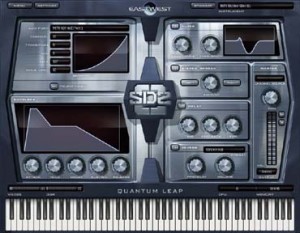 Storm Drum 2 If you use Play as a multitimbral plug-in, your DAW channel effects will apply to all the drums. No worries, Play includes its own filter, effects and panning controls for each MIDI channel. There are plenty of sound shaping options, including a reverb section with enough variety to cover any genre. The built-in effects include a delay, a panning controller, volume and an ADSR for each channel. I found the filter useful for taming the stick sound in the toms and it’s mapped to the mod wheel so you can tweak it as you play or store your favorite setting in the patch. Of course, you can load one Play instance for each sound and use your own channel strip plug-ins. I’m happy to report that SD2 plays well with others, particularly driving guitars, synths and symphonic brass. The thundering ensemble drums really “super sized” an action film score I’m working on. The cool thing is that you don’t need a huge number of tracks to get a big sound. A simple arrangement with just a few tracks of SD2 sounds like you rented a Hollywood scoring stage and a small army of drummers. In fact, when I started working on this review I thought SD2 would be perfect for the Terminator 4 score. Apparently composer Danny Elfman felt the same way. Cue the DUH-dum-dum-duh-DUM riff. The patch collections open up new ways to get a pro sound very quickly. Among the unique sound sets are Ambient Largeness and the Rumpfs. Are you on a tight schedule and need to punctuate the end of a scene? You need a Rumpf, my friend. It goes… “Whoosh…boom.” It’s an amazingly quick way to drop in a polished impact and they come in all shapes and sizes. There are fresh glitch sounds (that’s a good thing) and blips in the ‘Fuzzbox” set; subtle and hip percussive sounds to keep a pulse going. The many sound design elements include swooshes and “stutter makers,” Asian percussion, such a Vietnamese wooden mallet instrument, Devil Chasers, bamboo sticks and for you Planet of the Apes fans, the angklung. The congas and bongos are versatile but the sampled nature would be less apparent with more alternating samples, especially when soloed. The mapping works well for keyboard controllers with similar samples across five adjacent white keys. However, the three-octave jump between low and high bongos and four octaves between the congas gave me a workout. Some instruments have mappings for Zendrum but I was not able to test these. Also reviewed on this site are True Strike Pack and Flying Hand Percussion — related products from other companies. If you have the budget, I would consider owning all three products. There is less duplication between SD2 and TS Pack than I expected and Flying Hand Percussion is a one-of-a-kind product. TS Pack includes symphonic percussion instruments but SD2 is much stronger in the effects percussion and sound design elements. Both sets include excellent large ensembles with SD2 offering more options in this category. Both have strong collections of world drums. See the other reviews for details. SummarySD2 reflects East West and Quantum Leap’s vast experience in developing professional sample libraries. It’s a thorough collection and the sound quality is flawless. If you need powerful drums, deep atmospherics and some no-nonsense grooves to get your production started, SD2 is a must. If history repeats itself, these fresh sounds are going to be with us for many years. Fast FactsApplications: TV, film, game, rock & ethnic music arrangement; education Key Features: 24-bit percussion samples including studio kits, ethnic drums and metals, sound design percussion, royalty free MIDI performances US Prices: $395 list (approximately $350 on the street) Contact: EASTWEST, www.soundsonline.com Product Points Minus The Score Stormdrum 2 is an outstanding and quite versatile collection. Well priced and an excellent value. |
(c) 2008 Carlos Garza
